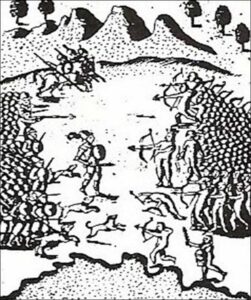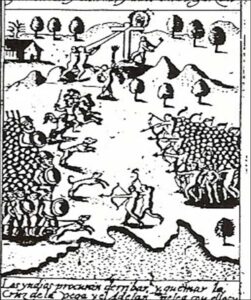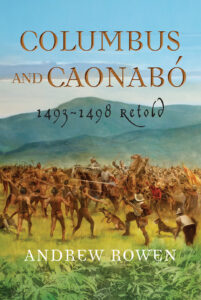As depicted in Columbus and Caonabó, Taíno peoples fought the first major battle of four centuries of wars between Amerindians and Europeans on March 27, 1495 (528 years ago), beneath the hill now known as Santo Cerro (Holy Hill) north of La Vega, Dominican Republic. Chief Caonabó had just been captured by Hojeda (see prior post) and chained inside Columbus’s fortified residence at Isabela—which triggered the battle.
Historians have different accounts of how the combat unfolded, and Columbus’s letter to Queen Isabella and King Ferdinand of October 15, 1495 (first available in 1985, as discussed in the post of February 25), gives his perspective. For the modern Christian interpretation and photos from atop Santo Cerro, where the lovely church Santuario Nuestra Señora de las Mercedes now sits, see post of March 14, 2020, also at battle-of-santo-cerro/).
Columbus’s letter indicates he dispatched Hojeda with seventy men and that they fought a force of over 2,000 “Indians” led by a “brother of Caonabó…a great warrior…leading many men in battle formation and order as if in Castile or France.” The brother (who Columbus and Caonabó identifies as Manicoatex) “organized five corps with his men, putting each in its place, and set his banner on an imposing hill two bowshots from the Christians,” planning to encircle the Christians. One corps was waiting “for the horses on the field to knock them over…but it was the horses that ran over them…” My read of the letter is that Columbus didn’t participate in the battle.
Below are three portrayals of the battle, two from Antonio de Herrera’s Historia General, 1601(the second depicting divine intervention in favor of the Spanish), and the front cover of Columbus and Caonabó, drawn for the book by Robert Hunt.



